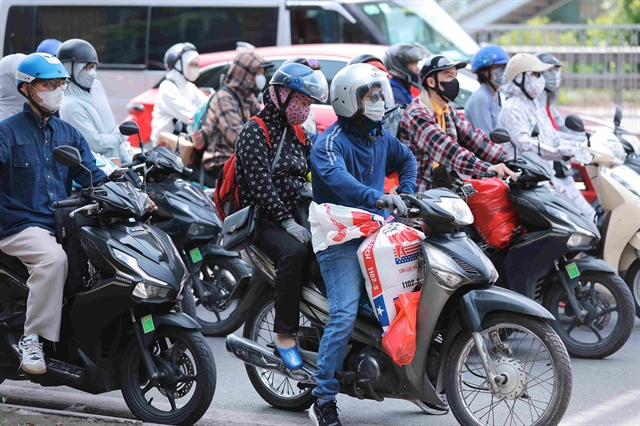Motorcycles should be the focus of traffic safety programmes: experts
Society – Economy - Ngày đăng : 17:24, 04/11/2024
 |
| In developing countries, motorcycles are more than personal forms of transport – they are also tools for business, production and transport of goods and services. — VNA/VNS Photo Hoàng Hiếu |
HÀ NỘI — With nearly 74 million motorcycles from a total population of 100 million people, Việt Nam needs to continue its efforts to strengthen road safety and reduce the mortality rate related to this type of vehicle.
This was the view of the representative of the World Health Organization (WHO) to Việt Nam, Angela Pratt, at an international workshop on best practices and challenges in motorcycle safety in Hà Nội on Monday.
The two-day workshop was organised by Việt Nam’s Transport Development and Strategy Institute (TDSI), in collaboration with the WHO and related stakeholders. It is also seen as an important piece of preparation for the fourth Global Ministerial Conference on Road Safety, which is scheduled to take place in Morocco in late February next year.
The world needs to collaborate in developing solutions to prevent traffic accident risks and should not view these as unavoidable incidents, she said.
With nine out of 10 vehicles on the road being motorcycles, Việt Nam has made significant policy improvements to raise awareness, upgrade infrastructure and reduce traffic injuries, resulting in a decrease of more than 40 per cent in traffic-related deaths from 2010 to 2021.
WHO has been working with Việt Nam and other countries to ensure motorcycle safety, especially for children who go to school on their parent’s motorcycle on a daily basis, said Pratt.
They also hope to increase cooperation with Vietnamese agencies in the future to help implement the Law on Road Traffic Order and Safety and Law on Road, which will take effect on January 1, 2025.
Addressing the event, TDSI director Dr Khuất Việt Hùng said that ensuring motorcycle safety is currently a pressing issue at a global scale, not only in Việt Nam or India, where this is the primary mode of transport.
In developing countries, motorcycles are more than personal vehicles - they are also tools for business, production and transport of goods and services.
However, the convenience and popularity of motorcycles present significant challenges in traffic safety, which greatly affect people’s lives and the economy in many countries.
Motorcycle accidents account for two-thirds of the total road traffic incidents in Việt Nam, which demands more comprehensive and determined solutions to protect motorcyclists and minimise the injuries and casualties related to this type of vehicle.
The country has put forward policies and programmes, such as mandatory use of helmets while driving, monitoring the blood alcohol concentration of motorcyclists, improving road infrastructure and raising public awareness of traffic safety, which have yielded encouraging results.
 |
| The two-day international workshop on motorcycle safety starts in Hà Nội on Monday. — Photo baogiaothong.vn |
However, there remain multiple shortcomings in traffic safety regulations which need to be addressed, according to Trần Hữu Minh, head of the office of the National Traffic Safety Committee.
One of the key issues is the group of adolescents aged 16-18, who are legally allowed to drive scooters of below 50cc but lack traffic safety knowledge and proper driving skills.
In addition to strengthening training and testing for driving licences, Minh added that it is necessary to tighten regulations on the mandatory use of helmets for children, as there are no specific standards for helmets for children below six and no penalty specified for cases when children of this age group are travelling on a motorcycle without a helmet.
Meanwhile, despite a motorcycle registration being in place, the actual number of motorcycles in circulation is lower than the number registered.
In Hà Nội and HCM City, 75 per cent of the total registered motorcycles are not in use due to various reasons, such as being moved to other cities and provinces before being disassembled and sold for parts.
Therefore, the current registration figures do not reflect the actual number of motorcycles on the roads.
Furthermore, although motorcycle standards have been put forward, safety levels for motorcycles in Việt Nam are considered relatively low. These vehicles are also not yet subject to mandatory technical safety inspections, which has led to some old and unsafe motorcycles still in circulation.
Shortcomings in urban planning and transport infrastructure also led to excessive use of motorcycles for trips that could be made on foot or by bicycles.
“Therefore, the challenges and solutions to ensure motorcycle safety should be prioritised in upcoming traffic safety programmes," Minh said. — VNS
